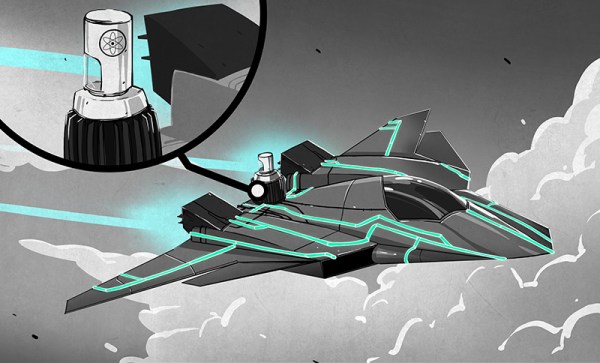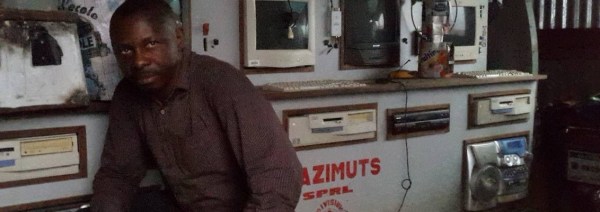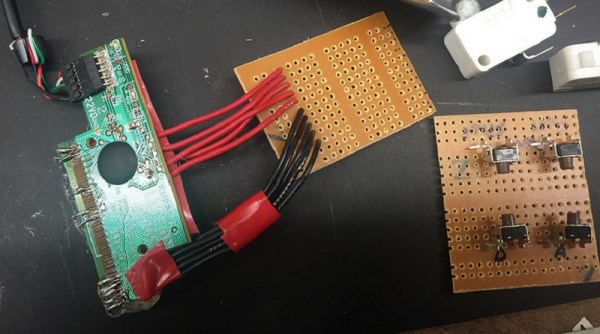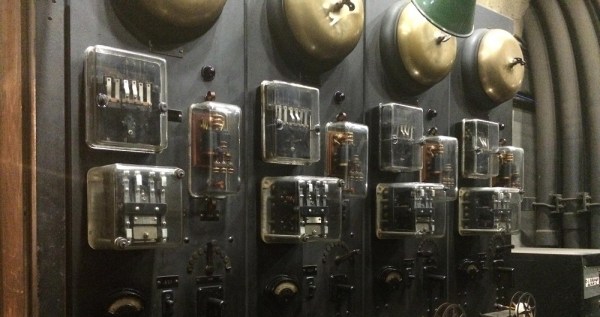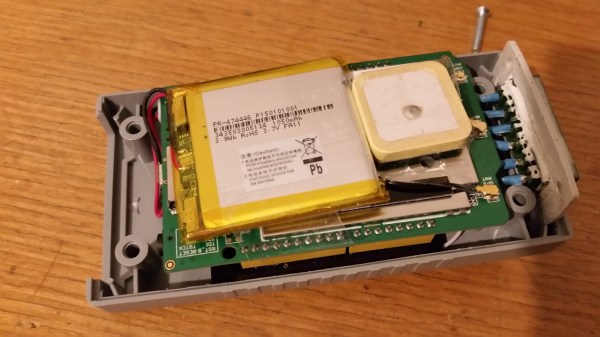At any given moment, several of the US Navy’s Nimitz class aircraft carriers are sailing the world’s oceans. Weighing in at 90 thousand tons, these massive vessels need a lot of power to get moving. One would think this power requires a lot of fuel which would limit their range, but this is not the case. Their range is virtually unlimited, and they only need refueling every 25 years. What kind of technology allows for this? The answer is miniaturized nuclear power plants. Nimitz class carriers have two of them, and they are pretty much identical to the much larger power plants that make electricity. If we can make them small enough for ships, can we make them small enough for other things, like airplanes?
Author: Will Sweatman199 Articles
Magnetic Levitation With Arduino
Getting a magnetic field to balance on another magnetic field is about as easy as balancing a bowling ball on the tip of an ink pen. With a little help from an Arduino mega, however, [EmmaSong] was able to balance a high density neodymium magnet in midair. He pulled off this tricky project using a set of four coils he got off of Taobao (the Chinese version of eBay), a hall effect sensor, and a handful of current regulation ICs.
The coils can be made in house if necessary, with each winding getting about 800 turns of enameled wire. The rest of the circuit is straightforward. It appears he uses a potentiometer for a rough regulation of the current going to the coils, doing the fine tuning in the code which can be found here (.RAR direct download).
We’ve seen magnetic levitation here before, and this project adds to the list of successful techniques to accomplish this difficult project.
Congo’s Space Program
Deep in the hills of the Democratic Republic of Congo, you’ll find men and women hard at work providing a living for their family. You might find some working in one of the nation’s mines which are rich in natural resources. Others will be working the farms or participating in one of many diverse cultural customs. If you head two hours via dirt road from the capital city of Kinshasa, however, you’ll find something a bit out of place for the area – an active space program.
On a vast yam farm, [Jean-Patrice Keka] has single-handedly developed several rockets that have flirted with the 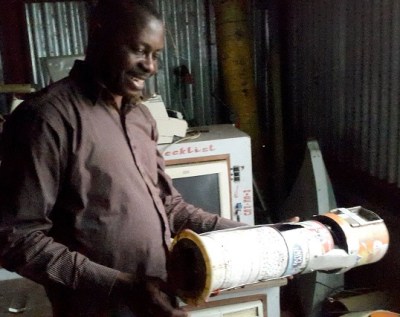 elusive zero gravity environment. [Mr. Keka’s] ‘Mission Control’ is a corrugated metal shed lined with CRT monitors and dated computers, but don’t let this fool you. His vision and drive are just as great as any space faring nation.
elusive zero gravity environment. [Mr. Keka’s] ‘Mission Control’ is a corrugated metal shed lined with CRT monitors and dated computers, but don’t let this fool you. His vision and drive are just as great as any space faring nation.
His intellect has made him a small fortune in commodities trading, and allows him the luxury to finance his operation without the need of government help. From time to time, he employs the help of local engineering students to get his rockets off the ground. Their payload has included rats and insects, with one launch reaching 10 miles of altitude and the current project aiming for 120 miles. [Mr. Keka] has become a national hero via the televised broadcasts of the launches, and has gotten the attention of national government officials. They even flew him to the US once to petition funding for his work.
[Mr. Keka] and his story should serve as an inspiration to all inspiring hackers and makers to pursue their dreams.
Thanks to [Cmh62] for the tip.
Broken Finger Is No Obstacle To Modern Hacker
[Jim Merullo] and his son were enjoying a nice game of Frisbee when an unfortunate dive led to an injury. His son broke his pinky finger leaving doctors no choice other than bounding his entire left hand in an unreasonably large cast. For most, this would mean no use of the left hand for several weeks, which is somewhat problematic if 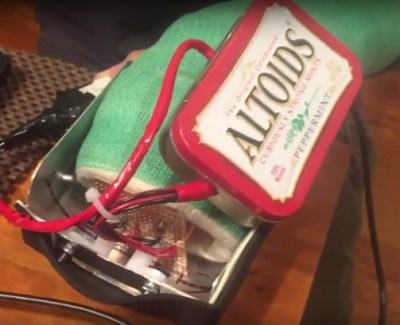 your son has a Minecraft addiction. [Jim], however, is no stranger to the hacker community and began working on a solution. He broke out the #2 Philips screwdriver, fired up the soldering iron and got to work.
your son has a Minecraft addiction. [Jim], however, is no stranger to the hacker community and began working on a solution. He broke out the #2 Philips screwdriver, fired up the soldering iron and got to work.
A detailed analysis of the injured left hand revealed limited use of the middle and ring finger, and full use of the thumb. Because his son played the game using his right hand for the mouse and left for the keyboard, he needed to find a way for him to operate a keyboard with the limited use of his left hand. He took apart an old USB keyboard and soldered up some tactile switches to emulate the needed key presses. After making a fashionable Altoids tin mount that fit over the cast, his son was able to enjoy his favorite video game with limited interruption.
Continue reading “Broken Finger Is No Obstacle To Modern Hacker”
Retrotechtacular: New York City’s Secret Computer
Over 750,000 people pass through New York City’s Grand Central Terminal each day. Located in the heart of the city, it’s one of the largest train stations in the world. Its historic significance dates back to 1913, when it opened its doors to the public. At the time, few were aware of the secret computer that sat deep in a sub basement below the hustle and bustle of the city’s busy travelers. Its existence was kept secret all the way into the 1980’s.
Westinghouse had designed a system that would allow authorities to locate a stuck train in a tunnel. There were cords stretched the length of the tunnels. If a train stalled, the operator could reach out and yank on the cord. This would set off an alarm that would alert everyone of the stuck train. The problem being that even though they knew a train was down, they did not know exactly where. And that’s where the computer come in. Westinghouse designed it to calculate where the train was, and write its location on some ticker tape.
So this is the part of the post where we tell you how the computer established where exactly the train breakdown occurred. Although the storyteller in the video is admirably enthusiastic about telling the story, our depth of detail on the engineering that went into this seems nowhere to be found. Let us know in the comments below if you have a source of more information. Or just post your own conjecture on how you would have done it with the early 20th century tech.
The invention of the two way radio made the whole thing obsolete not long after is was built. Never-the-less, it remains intact to this day.
Thanks to [Greg] for the tip!
Bertlmann’s Socks And The Nature Of Reality
The philosopher in the street, who has not suffered a course in quantum mechanics, is quite unimpressed by the [Einstein-Podolsky-Rosen] correlations. He can point to many examples of similar correlations in everyday life. The case of Bertlmann’s socks is often cited. Dr. Bertlmann likes to wear two socks of different colours. Which colour he will have on a given foot on a given day is quite unpredictable. But when you see that the first sock is pink you can be already sure that the second sock will not be pink. Observation of the first, and experience with Bertlmann, gives the immediate information about the second. There is no accounting for tastes, but apart from that there is no mystery here. And is this [Einstein-Podolsky-Rosen] business just the same?
John Bell began his now famous paper with the above paragraph. The Bell Inequality started off like so many other great theories in science – as a simple thought experiment. Its conclusions were not so simple, however, and would lead the way to the end of Einstein’s idea of local hidden variables, and along with it his hopes for a deterministic universe. In this article, we’re going to look at the Bell inequality in great detail. Our guide will be a chapter from Jim Baggots’ The Quantum Story, as it has one of the best descriptions of Bell’s theory I’ve ever read.
Continue reading “Bertlmann’s Socks And The Nature Of Reality”
Data Logger Powered By Linkit One Board
[Jed Hodson] put together a nice little data logger with a Linkit One board at its heart. It’s capable of logging two analog channels and one digital channel which also has PWM capabilities. A GPS is used to get the correct time and a Freetronics OLED display coupled with a shield lets the user view the data in real time.
The data is logged on the Linkit One’s internal storage as a .CSV file, allowing for easy access via a spread sheet program. A LiPo rechargeable battery keeps the electrons flowing and the system will give a warning once the power drops below 20%. Speaking of system – the Linkit One board features an ARM-7 processor and has headers to fit Arduino shields. It’s targeted for wearable and IoT type devices.
Be sure to check out this project if you’re in need of a nice data logger. All code and details of the build are available on [Jed’s] Blog.

